With this post, I bring to a close my pandemic project for this blog: a retrospective of all 50 years of my chess career (so far). I had intended to end the series with a game from 2021, my fiftieth calendar year of tournament chess. Unfortunately, the pandemic did not release its grip in time, so I didn’t play any tournament games in 2021.
However, the fiftieth sidereal year of my chess career is still in progress! I played in my first post-pandemic tournament two weeks ago, and I already showed you one game from that tournament (The Agony and the Ecstasy). The game I’ll show you today is a very fitting companion to that game and also a very fitting conclusion to the series. It features, once again, the most amazing opening in chess (that I know of), the Bryntse Gambit.
Dana Mackenzie — Bryce Yeh
1. e4 c5 2. f4 d5 3. Nf3 de 4. Ng5 Nf6 5. Bc4 …
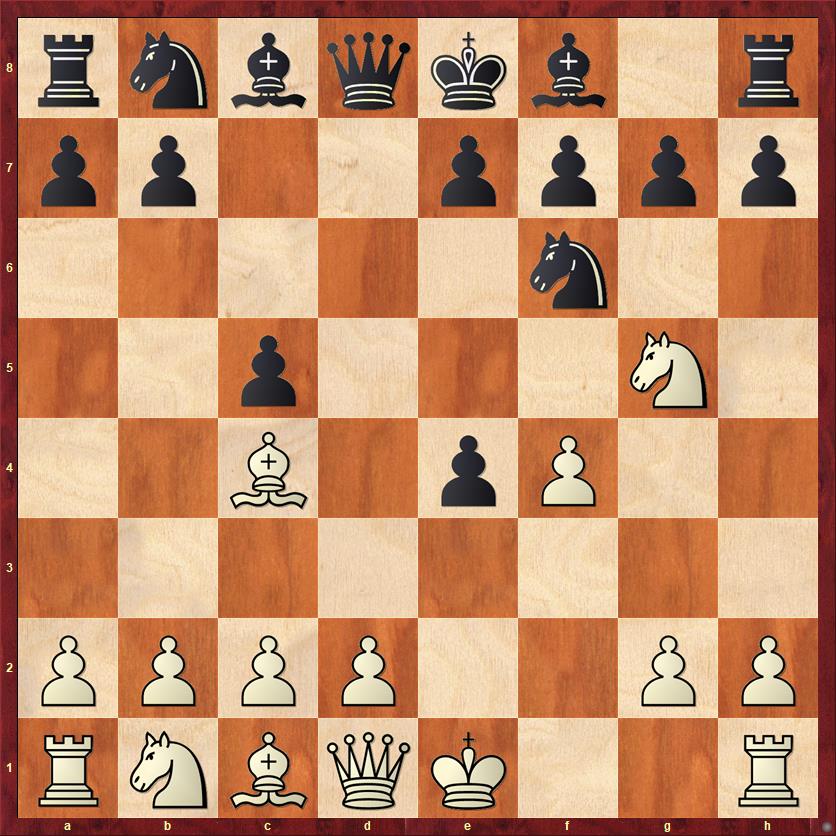
FEN: rnbqkb1r/pp2pppp/5n2/2p3N1/2B1pP2/8/PPPP2PP/RNBQK2R b KQkq – 0 5
Here, as I wrote in my last post, Black faces a choice that says a lot about who he is as a chess player. One option is to simply defend the threat with 5. … e6. That was the move played against me by Advay Bansal in round six, and he won in extremely impressive fashion.
The second option is far more combative, and in my opinion foolish! Some Black players cannot resist the opportunity to chase after White’s queen. When I played over this game afterwards, I was struck by the fact that every time Bryce Yeh had a bona fide choice in this game, he always chose the most aggressive option. Evidently, that is his chess personality — an aggressive, go-for-broke player. A perfect person to play the Bryntse Gambit against!
5. … Bg4?!
After seeing how effortlessly Bansal equalized (or even got an advantage) with 5. … e6, I’m beginning to think that 5. … Bg4 is just a blunder.
6. Qxg4! Nxg4 7. Bxf7+ Kd7 8. Be6+ Kc6 9. Bxg4 …
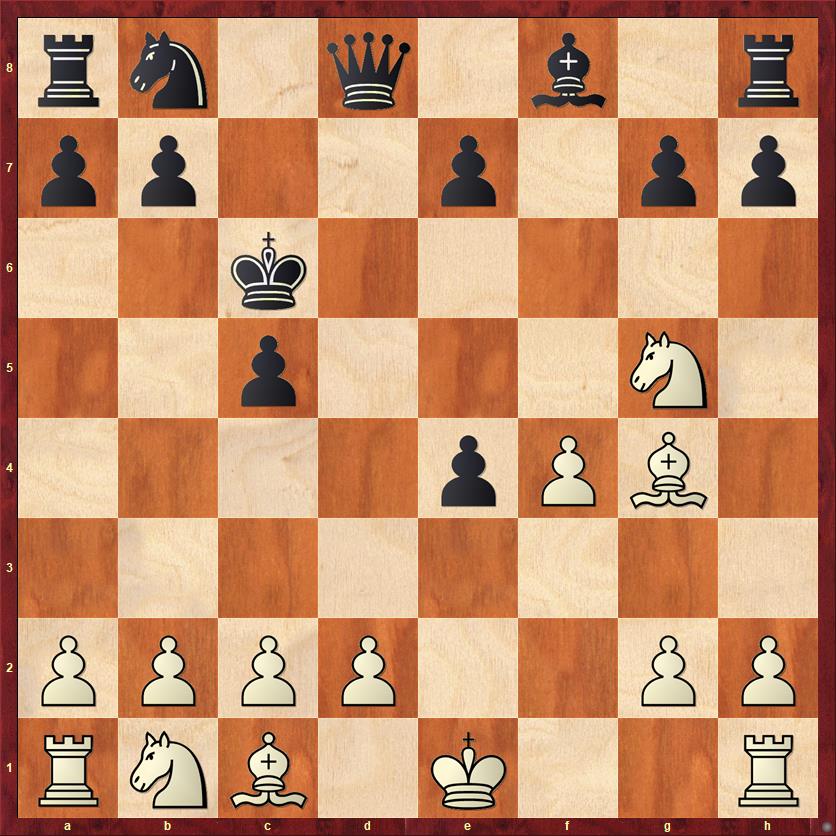
FEN: rn1q1b1r/pp2p1pp/2k5/2p3N1/4pPB1/8/PPPP2PP/RNB1K2R b KQ – 0 9
This is basically the starting position of the Bryntse Gambit Accepted. One of the beautiful things about this opening is that there are no books about it. Every game you play in this opening is almost guaranteed to be a theoretical novelty. Black has zillions of choices and White has lots of choices, and you can never hope to analyze them all.
9. … e5
I’ve long suspected that this is Black’s best move, provided he avoids the obvious trap. I was glad to have a chance to play against it for the second (but really first) time in a tournament.
10. Nf7 Qe8!
The trap is 10. … Qh4+ 11. g3 Qxg4?? 12. Nxe5+ Black resigns, Mackenzie-Harrison, Western States Open 2006. This is a nice example of how White’s knights in this opening become what Mike Splane used to call “super-pieces.” They cover more squares than they normally would because of their ability to interpolate checks. We’ll see more examples of this soon. It’s one reason why White’s pieces are actually stronger than two normal minor pieces, and arguably strong enough to compensate for the lost queen.
11. Nxe5+ …
A very important move. Time to talk once again about my five principles for playing this opening. 1) Keep Black’s queen from becoming active. 2) Keep all files closed. Black has a 3-2 advantage in “vertical” pieces, so any open file is likely to fall into his control. But if there are no open files, his rooks really struggle to find anything to do. 3) Try to exchange a knight for a bishop. This will give White two bishops that are unopposed by any Black bishop. They are unbelievably powerful, as you’ll see in this game — sometimes almost as powerful as two rooks. 4) Coordinate your pieces, look for ways to turn the knights into “super-pieces” (as just mentioned). 5) Do not cash in too soon. Wait, wait, and wait some more. Build the pressure, let your minor pieces crawl over the board like ants, and only take material if you can do it and keep the initiative.
Taking the exchange with 11. Nxh8? would violate principle 5 and, to some extent, principle 1 as well. The computer might tell you it’s White’s best move, but the computer does not understand.
11. … Kc7 12. Nc3 Bd6 13. Nc4 …
This was as far as my pre-game analysis went. I thought that White was doing okay here because this move is consistent with principle 3 (trade a knight for Black’s bishop) and principle 4 (look for ways to use “super-pieces” — in this case, the knight on c3 defends the pawn on f4). However, there are times when it does pay to listen to the computer. It comes up with the stunning move 13. O-O!, offering a pawn sacrifice. If Black takes with 13. … Bxe5 14. fe Qxe5, then 15. d3! creates lots of super-pieces. My bishop is a super-piece, threatening to come to f4 and skewer his king and queen. If he avoids that with 15. … Qd4+ 16. Kh1, now my knight is a super-piece, threatening to fork his king and queen. White’s piece coordination is truly awesome. The other point of 13. O-O! is that after other Black moves, like 13. … Rf8, White can continue 14. Nc4 as in the game, but with a safer king. Another awesome line is 13. O-O b5 (as in the game) 14. Bd7! Nxd7 15. Nxb5+! Wow, talk about super-pieces!
13. … b5!
I like this move. As I said earlier, Black played very aggressively whenever I gave him a chance to. Although his king gets lured out into the center, it actually serves a useful purpose, keeping my other knight out of d5.
14. Nxd6 Kxd6 15. O-O …
Here I wished I could play 15. d3, but it just exposes my king to too much danger. Notice, however, that if we had interpolated the moves O-O and … Rf8 earlier, then d3 would be a great move, opening up lines to attack Black’s king.
15. … b4 16. Nd1 …
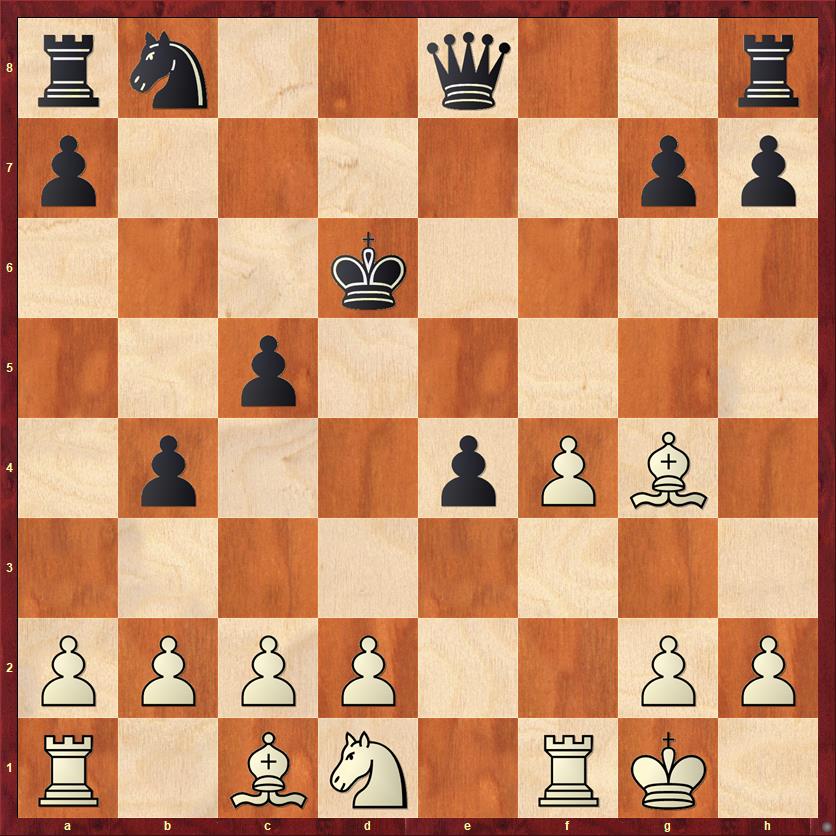
FEN: rn2q2r/p5pp/3k4/2p5/1p2pPB1/8/PPPP2PP/R1BN1RK1 b – – 0 16
I didn’t mind having my knight chased back to d1, because it has some great squares to aim for: e3, c4, possibly f5. But one thing did concern me in this position — the possibility that Black might bring his knight to d4. On that square, it does a good job of shutting down my dark-squared bishop. The computer thinks this position is in Black’s favor, and I think that it may be right. That’s one reason I would be really interested in 13. O-O as a possible improvement next time.
Here I caught my one lucky break of the game. For whatever reason, Yeh deviated from his normal strategy of playing the most aggressive move. Instead, he plays a move that seems to be mostly preoccupied with defending the e4 pawn.
16. … Nd7? 17. Ne3 Nf6 18. Be2 Kc7 19. b3 Rd8 20. Nc4 …
The knight now has an excellent outpost, which defends d2, thus allowing my bishop to develop, and which also eyes squares like d6 and a5. This is the first moment when the computer agrees that White has completely equalized. But “equal” is a slippery term in the Bryntse Gambit. Given the material situation is still a queen against two pieces and a pawn, “equal” really means that White has a huge amount of counterplay and is likely to win against any human opponent.
20. … Nd5 21. Bb2 Nb6?
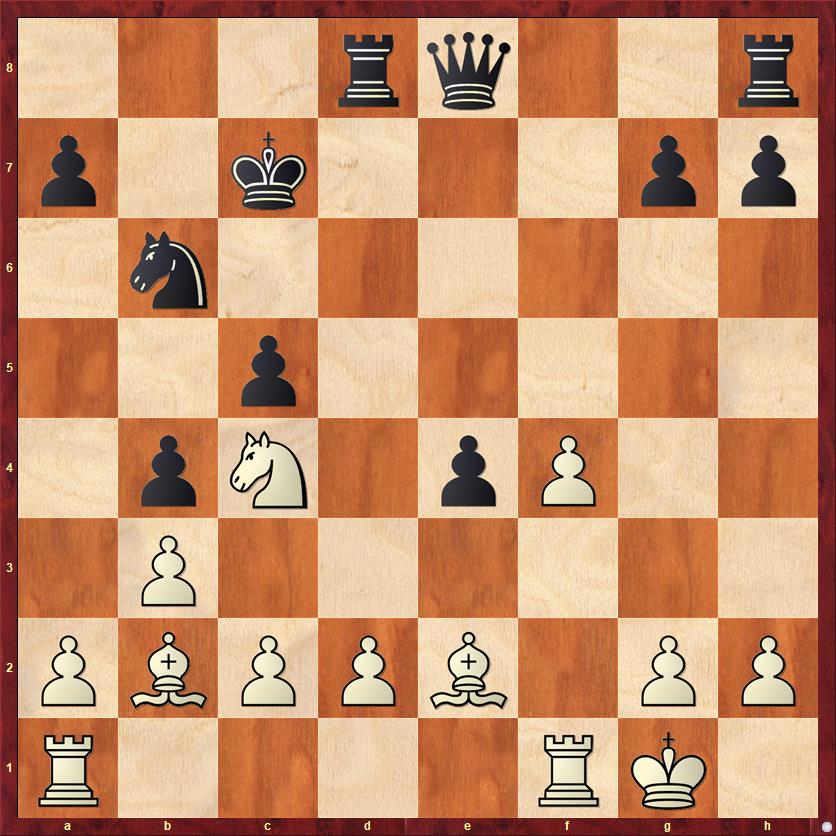
FEN: 3rq2r/p1k3pp/1n6/2p5/1pN1pP2/1P6/PBPPB1PP/R4RK1 w – – 0 22
The last move exemplifies the difficulty of playing this variation as Black. He should probably just defend the g-pawn with 21. … Qe7, but he’s already getting tired of defending. Instead, he offers White a chance to win back some material with 21. … Nb6 22. Bxg7? Nxc4 23. Nxc4 Rxd2. And indeed, his strategic thinking was quite sound. Once Black gets his rook on d2 and his queen on the g-file, I’ll be in trouble.
For me, taking the pawn on g7 would violate principle 5 of this opening, don’t cash in too soon. I wasn’t even slightly tempted. Instead I keep improving the position of my pieces.
22. Be5+ Kc8??
It’s getting worse and worse for Black. Yeh was surely expecting me to go for the exchange with 23. Nd6+ Rxd6 24. Bxd6 Qd8. But this violates principles 5 (don’t cash in too soon!) and 1 (keep Black’s queen under lock and key). Once the queen gets to d2, it will create huge headaches for me.
So 23. Nd6+ is strategically wrong, and I soon found a move that was also much better for tactical reasons.
23. Nxb6+! …
I’m sure Yeh completely missed this. The point is that 23. … ab runs into 24. Ba6+ Kd7 (only move!) 25. Bb5+, winning the Black Queen. Piece coordination in excelsis! Also notice that by not cashing in on the exchange earlier, I was able to haul in a much bigger prize.
23. … Kb7 24. Nc4 …
Now we’re in an absolute dream position for White in the Bryntse Gambit. I now have more than material equality (three pieces plus a pawn for the queen), and my pieces are in complete control over the board. His rooks and queen can do nothing. At this point you might be tempted to fast-forward to the end, but I do think that the rest of the game is worth playing over and the end is really cute.
24. … g6
Remember how I said that if you play the Bryntse Gambit right, your opponent will beg you to take the exchange? Now Black is offering me the exchange in two different ways (25. Nd6+ or 25. Bxh8) but I’m not interested in either one. My minor pieces are at least as good as his rooks.
25. Rae1 Rf8 26. Nd6+ …
Here I relented and finally deviated from principle 5 (don’t cash in too soon). The reason I agreed to take the exchange was that I gain a tempo by attacking his rook on f8, so his queen doesn’t get a chance to skewer my bishop on d6 and pawn on d2. However, it was a tough choice between this move and the simple 26. Bd1, grabbing another pawn on e4.
26. … Rxd6 27. Bxd6 Rf5 28. Be5? …
My one slip of the game. I played this move almost immediately, getting my bishop out of the aforementioned skewer. As soon as I pressed my clock, I realized that 28. Bf3! would have been just annihilating.
28. … Qd8 29. d3 ed 30. Bxd3 Rf7 31. Be4+ Kb6 32. Rd1 Rd7 33. Bf3 …
Playing it a little bit too “cute.” There was no reason not to trade rooks.
33. … Rd2
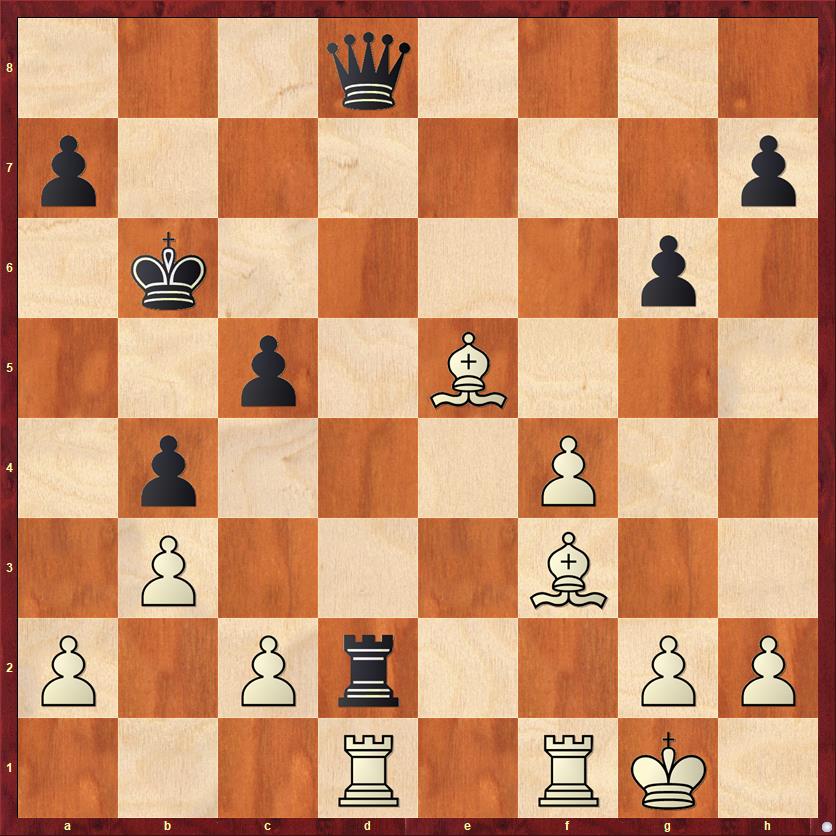
FEN: 3q4/p6p/1k4p1/2p1B3/1p3P2/1P3B2/P1Pr2PP/3R1RK1 w – – 0 34
Whoops! I missed Black’s move. True to form, Yeh plays the most aggressive-looking move, and for a few moments I was worried that I had let him back in the game. But gradually I realized that he is threatening nothing. Neither his rook nor his queen can leave the d-file; they just have to sit there, looking menacing but with no real threats.
Since he can’t do anything, I made a couple of quiet moves, the first one to create a flight square for my king and the second to take away a flight square from his king. Then I brought down the hammer.
34. h3 h5 35. c4 Qd3 36. Rxd2 Rxd2 37. Rd1 Qe3+
If 37. … Qxa2, then 38. Rd6+ Ka5 39. Bb7 forces mate.
38. Kh2 a5
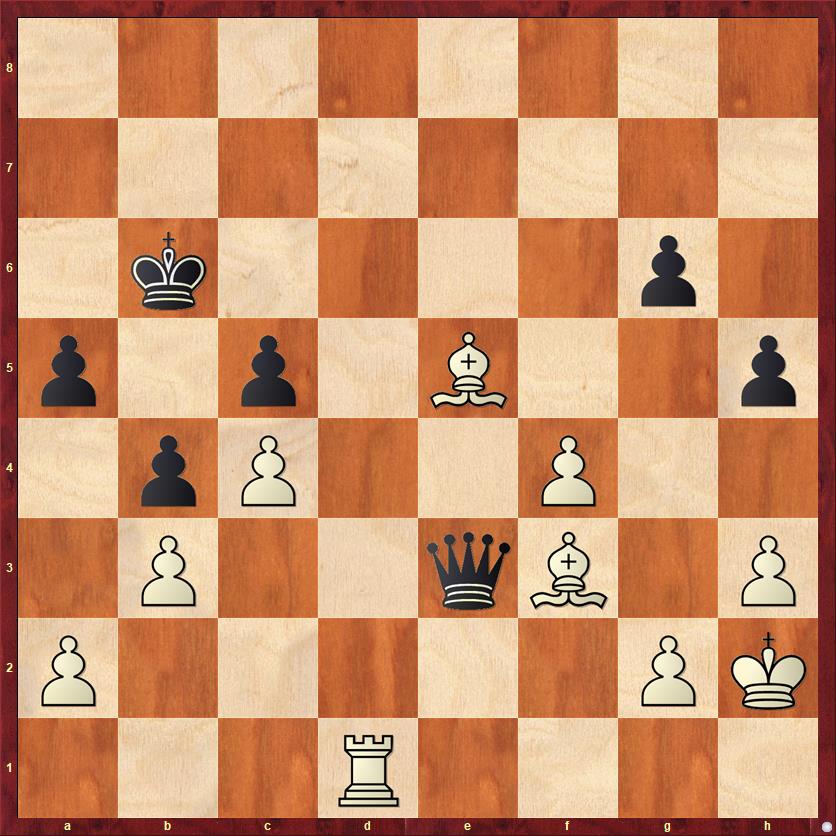
FEN: 8/8/1k4p1/p1p1B2p/1pP2P2/1P2qB1P/P5PK/3R4 w – – 0 39
Black’s last move was intended to create a flight square on a7, but now White has a very artistic finish.
39. Bb8! …
Creating a sort of upside-down back-rank mate threat. There is no way out for Black except to give up his queen, which he refuses to do.
39. … a4 40. Rd6+ Ka5 41. Bc7 mate.
I have only one more thing to say about this game. I could tell that my opponent was getting angry over the last ten moves or so, banging his pieces down and finally dashing off after the game without any handshake or congratulations. I have to admit that I enjoyed his anger a little bit. From his point of view, I was probably just some patzer who blundered a queen on move six and didn’t deserve to win the game.
However, I do hope that he got online afterwards and realized that the “patzer opening” that I played is actually legitimate and that I have beaten an International Master and drawn a Grandmaster with it. And he chose a line that I think is one of Black’s most promising options; a lot hinges on whether 13. O-O is better than 13. Nc4. Yes, he blundered on moves 21 and 22, but the position was already starting to get difficult for him. In my opinion, he has nothing to feel ashamed or angry about.
For me, I’m thrilled any time I get a chance to play the Bryntse Gambit. This is now my fourth tournament game with it, so I’m starting to get a decent sample size. So far I have a win against an 1800 player, a win against a 2000 player, a win against a 2450 player, and a draw in a winning position against a 2500 player. That’s a performance rating of almost 2500, and don’t forget that my rating during this entire time has been around 2150. So playing the Bryntse seems to give me about 350 extra rating points! Not a bad deal!
And with that, I close the book on my first 50 years of tournament chess, and look forward to embarking on my next half century.



{ 2 comments… read them below or add one }
Nice game, and a good way to end your first 1/2 century of chess!
Brilliant, the Bryntse-Mackenzie Gambit wins again!